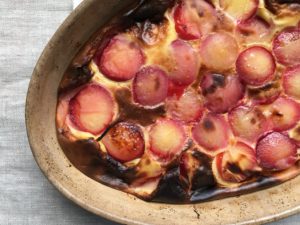
A couple of months ago, figuring I was going to be spending the summer in France, I decided it was high time I read Julia Child’s memoir.
And though I realize I’m about 50 years late to the party on this, let me tell you: Julia Child is an absolute delight.

Child moved to France with her husband Paul after World War II. And though we are decades apart, I recognized so many aspects of my experience in hers. A native Californian, she arrived in Paris to find a world so different from her own, so complicated (apparently bad French plumbing is forever), and yet so utterly marvelous that she can’t help but fall in love.

On top of this, her personality just leaps off the page. She was kind and patient, but she suffered no fools; she wanted to make cooking accessible, but she also felt it deserved time and care; and she loved food on its own, but even more she reveled in bringing people together around a table. She seems to have taken such genuine pleasure in life. She also pioneered television cooking shows and brought French food to America.
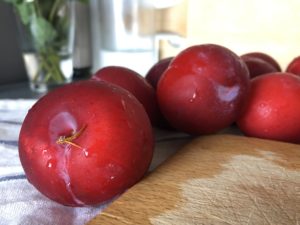
And so, with the stonefruit at the markets here piling ever higher (and prices dropping accordingly), I decided to dip into Child’s encyclopedic Mastering the Art of French Cooking for this clafoutis recipe.
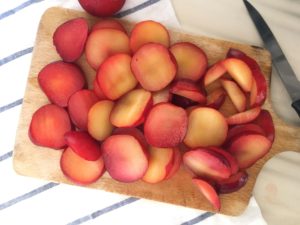
When many Americans think of French desserts (and French food, really), they think heavy, rich, and complicated. Yet clafoutis is as French as it gets, and it couldn’t be any simpler. A custard-type egg mixture is all it takes to hold together lucious summer stonefruit; it puffs up and turns golden brown as the fruit softens and caramelizes. It is a delightful way to end a summer dinner—though after having the leftovers for breakfast the next day, I think this would be a lovely sweet accompaniment for brunch, too. (Eggs + fruit + milk = don’t tell me that’s not brekky.)
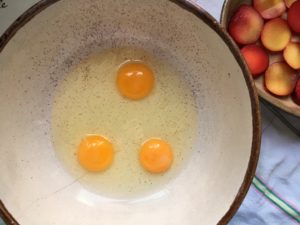
Making this was also a lesson in what the French call cooking au pif–literally “by the nose.” I had a gratin dish that was the same size as Child’s. But I was using a different fruit. I also had to eyeball her measurements, since my current apartment doesn’t have measuring cups or spoons. And my oven has a number of pre-set options, none of which offer the prescribed cooking temperature.

So, when my clafoutis started looking close to done only 15 minutes into the prescribed 45-minute cooking time, I trusted my eyes and nose rather than the recipe: I covered it with foil to prevent burning, cooked an additional five minutes, and then removed the dish from the oven.
It was perfect. Thank you, Julia—the world is so lucky to have had you.
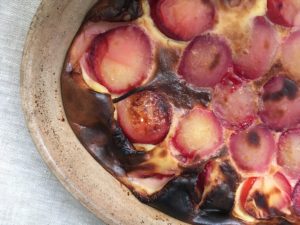
Plum clafoutis
Serves 6 for dessert
Adapted from Julia Child’s Mastering the Art of French Cooking, via the Denver Post
Ingredients
Butter for baking dish
3-4 cups sliced stonefruit (I used plums, but peaches or nectarines would be just as good!)
1 1/4 cups milk (I used low-fat)
1/2 cup granulated sugar, divided
3 eggs
2 teaspoons vanilla extract
1/8 teaspoon salt
2/3 cup sifted all purpose flour (yes, you have to sift–otherwise the batter will be lumpy)
Optional:
1 tablespoon brandy
Powdered sugar, to serve
Instructions
Preheat the oven to 375F (190C). Butter a shallow 2-quart (2-liter) baking dish.
Arrange the plum slices along the bottom of the baking dish. You want them relatively evenly spaced, but it doesn’t need to be perfect (this is rustic, remember?).
Place milk, 1/4 cup sugar, eggs, vanilla, salt, flour, and brandy (if you’re using it) in blender at top speed for one minute. (If you do not have a blender, beat the eggs vigorously with a whisk for one minute. Then add the other ingredients and beat vigorously again until well combined and frothy.)
Gently pour the batter over the top of the plums in the baking dish. Sprinkle the top of the batter and plum mixture with the remaining sugar.
Place the dish in the oven and cook for…20 minutes? 30 minutes? (Like I said, mine cooked much faster than the 1 hour that Julia Child indicates.) Do it au pif: it is done when the batter has puffed and browned and a toothpick inserted in the center comes out clean.
Serve alone or sprinkled with powdered sugar.
Leave a Reply